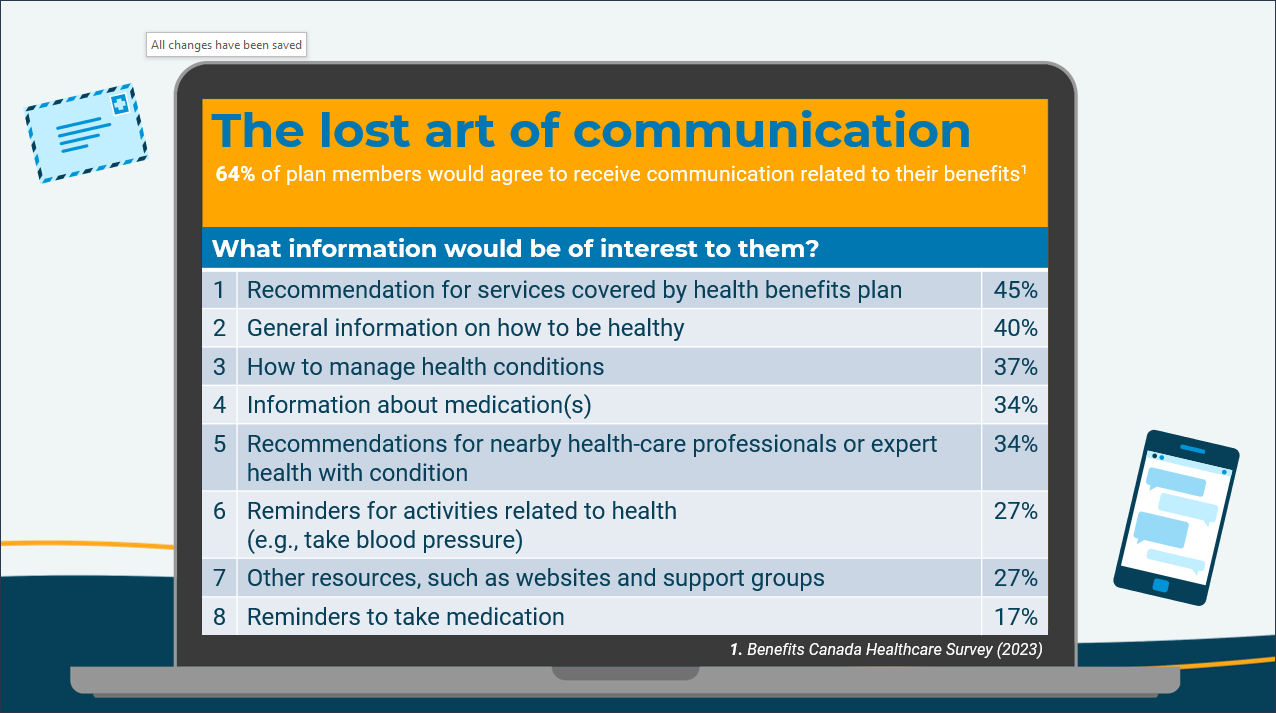Bridging the gap: Turning benefit plans into meaningful employee experiences
The 2024 Blue Cross Health Survey revealed a surprising insight: while most people understand the importance of preventative health measures, many are still not taking action. What’s stopping them?
- Lack of time
- Apprehension or nervousness in asking for help
This presents an opportunity for employers to bridge the gap between what’s available, accessible and understood to extract meaningful value from their benefit plan investments.
An evolving benefits landscape
The benefits landscape has seen unprecedented change in recent years. The global pandemic served as a reminder that unexpected events can and do happen, pushing organizations and society to focus more on proactive and preventative care. In the wake of these changes, appreciation for health benefit programs has increased, but comprehension has decreased.
Why? One key reason is that the traditional way of communicating benefit programs—using “policy language”—often makes the information hard to digest. While insurance is invaluable for protecting one’s health and finances, it remains an intangible product until it’s needed. As a result, employees may not fully understand or appreciate the value of their benefits.
Integrating wellness into the workplace
The workplace and employee expectations have changed. To truly engage employees and provide meaningful benefits, organizations must prioritize clear communication, streamline access and create a cohesive experience that integrates wellness into the organizational culture.
It’s not about pushing employees to use every benefit available. Rather, it’s about ensuring employees know what’s available, understand what each benefit is for and feel confident accessing these benefits if and when they need to. This proactive approach helps alleviate stress, ensuring employees are prepared to use resources that can support their health and wellbeing.

Example: Employee and Family Assistance Programs (EFAP)
EFAPs are well-known for supporting employees at an individual level, but did you know they can also support organizations?
EFAPs can provide insights into the immediate needs of your workforce through utilization reports. These reports highlight trends and pain points that can guide employers in planning relevant initiatives. For example, in 2024, the top reasons Saskatchewan Blue Cross plan members reached out to Homewood EFAP were:
Psychological support (52.6%)
- Anxiety (17.3%)
- Depression (10.2%)
- Stress (10.2%)
Marital/relationship issues (12.4%)
Family support (8.2%)
Understanding these trends can help plan sponsors tailor initiatives like lunch and learns, nutrition workshops and mental health resources to address the most pressing needs of their workforce.
The role of advisors
Advisors play a crucial role as strategic partners, offering valuable insights and creative solutions to help organizations make the most of their benefit plans. In Saskatchewan, where 99% of businesses are small businesses, human resources are often stretched thin or non-existent. This creates an immediate need for the expertise that advisors provide in building and integrating health benefit programs.
A shared goal: Healthy communities
Through partnership and collaboration, we can support Saskatchewan residents and communities in living healthier lives. With clear communication, a focus on everyday wellness and strategic integration of benefit programs, we can transform how benefits are perceived and utilized—leading to healthier, more engaged employees and a stronger, more resilient workforce.
Explore the full range of organizational wellbeing support available through the Homewood EFAP catalog and see how we can help you make the most of your benefit plan investment.
